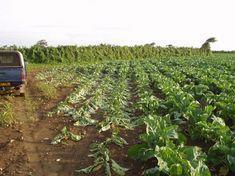
A virus with little or no noticeable symptoms that significantly reduces brassica yields has been put under the spotlight at the Brassica Growers Association conference.
Dr John Walsh from the School of Life Sciences at the University of Warwick said turnip yellow virus (TuYV), not to be confused with turnip yellow mosaic virus, commonly infects vegetable brassicas and oilseed rape but is often not detected by growers.
Yearly infection rates are directly linked to the number of aphids around and in 2009, a year when there were a lot of aphids, the university detected 100 per cent infection in some sets of samples.
Visible symptoms are rare but TuYV can cause reddening or yellowing symptoms in leaves and tipburn in cabbages.
Walsh told the conference: “Despite the fact you don’t see clear symptoms you can see serious reductions in yield and quality. There was a 60 per cent reduction in height of all sprouts that were tested.”
“For our recent project, looking at brussell sprouts in Lincolnshire, the crops were planted just as the aphids were starting to fly and within about four weeks of planting 48 of 50 plants were infected. Most of them were developing it quite early.
“We had a plot covered to exclude aphids from the early infection but they were subjected to a second infection when the aphids were flying again in the autumn.”
In order to tackle it, the university is working with the Horticultural Development Company (HDC) to determine the efficacy of insecticides in controlling the virus. However, Walsh said in the long-term there’s a need for more sustainable virus control.
“We feel the best approach is going to be natural plant resistance. We have identified natural resistance to the virus in some brassica or aecia relatives, that’s wild relatives to vegetable brassicas, and we’re now seeking collaborators for a project to exploit this resistance as part of a larger project in relation to club root and downing mildew of brassicas,” he said.



